As the fourth act of Shakespeare's Macbeth opens, the three Weird Sisters are concocting a foul potion made of bits and pieces of poisonous animals with enough variation in bodily organs that, if they desired, they could sew together a hideous monster comprised of newt's eyes, wolf's teeth, and the fingers of murdered babies. Despite a thick air that must be full of the foul fumes, the second witch still senses the imminent intrusion of an evil presence: Macbeth. She declares "something wicked this way comes" moments before he barges in, demanding conjured images of his fate.
Spirits assure Macbeth that no man of woman born can do him harm, something he foolishly takes as literal, and considers himself immortal despite his wife's descent into madness and death after their plan to rule their kingdom has turned to nearly incomprehensible tragedy:
Creeps in this petty pace from day to day,
To the last syllable of recorded time;
And all our yesterdays have lighted fools
The way to dusty death. Out, out, brief candle!
Life's but a walking shadow, a poor player,
That struts and frets his hour upon the stage,
And then is heard no more. It is a tale
Told by an idiot, full of sound and fury,
Signifying nothing.
Ray Bradbury's Something Wicked This Way Comes is heavily influenced by Macbeth, not merely through the use of the famous quote from the Second Witch, but almost as a counterpoint to Shakespeare's meditations on fate, dissatisfaction, impatience and the passing of time. Macbeth wallows in his discontent and allows his ruthless wife to encourage him to great crimes in a quest for power and glory. He is defeated by Macduff in the end, of course, but through being overpowered, outwitted and, as every human being eventually discovers, being unable to escape Fate.
In Bradbury's tale, however, Fate is not necessarily preordained. Those who would say otherwise are evil manipulators, dependent on man's inherent longing for that which he cannot have. They are the Autumn Ones, brought in by the fall wind and a late-night carnival train. The Autumn Ones convince men that their disturbing fates are inevitable and, in moments of weakness, prey on their desperate attempts to have the life they dream of rather than the one they are dealt.
Bradbury wrote Something Wicked This Way Comes as a screenplay in the 1950s, inspired by Gene Kelly of all people, who was interested in the concept but could never get the project off the ground. After turning it into a novel, Bradbury finally had the chance to adapt it back to screen in the early 1980s, this time with Jason Robards in the lead and produced by... Disney.
Ah, bright blue credits. You couldn't get any more 1980s unless you added some hot pink accents, or maybe used the Equalizer font. Another clue that this is pure 1980s is the obligatory opening sequence of beautiful New England fall foliage:
I've been a nut for autumn my entire life, and I blame, or maybe thank, 1980s kid's horror films like Something Wicked and The Lady in White (1988).
Disney was in the midst of trying to court a slightly older audience, the roughly 10-14 year old demographic, thus producing movies with a harder edge than their usual fare. Something Wicked does indeed promise wickedness, or at least mild naughtiness, with the opening title looking to have been written in dripping blood.
Unfortunately, the horror is rather slight in SWTWC. Will Halloway and Jim Nightshade are two young boys in 1930s Green Town, Illinois when a mysterious lightning rod salesman Tom Fury (Royal Dano) arrives. Jim, being the bolder of the two, buys a lightning rod and installs it on the house. Will is more timid, which is explained as being the fault, or at least caused by, his father being an older man with a mild heart condition. He's the town librarian, so he has the nerd stigma, as well; this is a change from the novel, where Charles is the janitor of the librarian, which of course explains why he is there at night. Will's father Charles (Jason Robards) has a deep shame for not being enough of a man, by being timid, older and unable to participate in physical activity.
Charles isn't keen on fantasy, which is understandable, since he is stuck in a world where his health and his age overwhelm everything else in his life. It doesn't matter what he wants when there are only so many things he is physically able to do. So he has little patience with other adults in town who live in their own fantasy worlds to an extent, basically longing for the past. A former football star who lost an arm and a leg in an accident dreams of playing again; Mr. Tetley knows he will eventually win the lottery if he just plays often enough; lady's man Mr. Crosetti (former '50s heartthrob Richard Davalos) expects beautiful ladies to come to town at any minute; and the local schoolmarm Miss Foley presumably dreams of her youth when she was the prettiest girl in town.
If their motivations seem strangely shallow, don't worry, that's because they are. Disney changed the screenplay to reduce the dimensionality of the adults, who in Bradbury's book and, presumably, his original screenplay, are much more complicated. Bradbury stated several times that he was upset at Disney's changes to the script.
Charles is dismissive and a bit pitying of all of the adults and their wishes. He is the realist in town, encouraging kids to get their adventures from books rather than in real life, mildly scolding Mr. Crosetti for his desires, shaking his head at everyone around him. When fliers for Dark's Pandemonium, a traveling carnival, start blowing in on the wind, the sleepy burg awakens, excited of the possibilities. Charles is uninterested.
Will and Jim, however, cannot help themselves. The three male characters of Charles, his son Will and his friend Jim Nightshade are three parts of a bildungsroman where each character is in a different stage of growth: Will is youngest and most fearful of what the future holds, Jim is already on his way to discovery and itching to grow up, and Charles Halloway is older and fearful as well, but it's not the same as Will's fear. Will has adulthood to fear, while Charles, pushing 60, knows the future means death.
The boys see suspicious things on the carnival train as it rolls into town late at night. The next day when the rides are set up, they watch as the adults around them live their desires. Miss Foley sees herself as young again in the mirror maze and Mr. Cosetti is surrounded by hot harem girls, while Mr. Tetley finally wins a contest.
But the boys know something strange is going on, so they return at night, only to see a carnival worker on a beautiful carousel, hidden from everyone's view. As it sails backwards, the worker gets younger and younger, until he becomes a little boy who pretends to be Miss Foley's nephew. They are unable to warn her in time, and the fake nephew somehow grants her the wish she has always wanted: Her youth and beauty. But she is immediately struck blind, which is a rather biblical punishment for a vanity we never really saw Miss Foley possess.
It seems that, just as Lady Macbeth was the dame at the root of all the tragedy in Shakespeare's play, the women in the film adaptation of SWTWC ain't nothin' but trouble.
Pam Grier is the beautiful woman in a rather thankless role of Dust Witch, a.k.a. Hot Chick With No Dialogue. She is stunning and has a terrific presence, her facial expressions and body language informing the role with meaning that I suspect the script did not originally have. The scenes play out as though they were written as, "Just stand there and look hot while we turn on the smoke machine." Grier is too good for that, and even though she never speaks, she and Jonathan Pryce as Dark, owner of the carnival, have quite the chemistry.
The Dust Witch is the sum of all men's desires. She is in the harem that seduces Mr. Cosetti, the pretty lady Mr. Tetley spends all his winnings on, the beautiful woman in white meant to convince Tom Fury to give up his secret of lightning control. Her purpose is to lure men to their false fate, avoiding the future they would normally have by being seduced into thinking a glorious, better future awaits. It doesn't, though, as what is promised is a monkey's-paw deal: A price must be paid, so the men are turned into statues or children or, in the case of Miss Foley, blinded.
The Dust Witch also controls the spiders -- when the boys get too close to the truth, she unleashes a nightmare of tarantulas on them that turns SWTWC into the finale of Kingdom of the Spiders for about three long, gruesome minutes. The tarantula swarm disappears when Jim and Will awaken, all just a dream, but clearly a dream given to them by the Witch.
Spiders in dreams mean different things, of course, because despite what Sigmund Freud might have told you last night while you were discussing bowls of bananas and the price of cigars in Cuba, dream interpretation isn't exact science. My husband was told in art classes at uni that they indicated a fear of the future, for example. There is of course danger implied when any poisonous creature is dreamt of, as well as the more literal interpretation of getting caught in a web.
But our friend Freud apparently thought they were symbolic of mothers in the context of the Oedipal complex, i.e. the mother who eats her own children, both literally and sexually:
Given the way women are portrayed in the film, I think it's likely that the script was using the Freudian interpretation. Not only is the Dust Witch seen as more evil and one-dimensional than Dark, but Miss Foley is punished more harshly than the men who also fall victim to their wishes.
Then there is Jim's mother, played by Diane Ladd. Jim's father ran off a few years earlier to pursue adventure, leaving his hot-to-trot wife behind. Mrs. Nightshade is Diane Ladd at her Diane Laddiest, all gussied up and lazy in bed while eating bonbons and ignoring her son. She dances with other men because she is either a floozy or a whore, the movie never bothers to differentiate between the two, and her sexuality bothers Jim greatly.
And let me tell you, for a Disney kid's movie, there is a lot of G-rated porn going on in this film. Jonathan Pryce as Mr. Dark, owner of the carnival, is nothing more than strong sexual desire in the shape of a man... but I repeat myself.
Dark and his Pandemonium are the Autumn Ones, supernatural carnies that roll into towns when they sense despondency and desire have welled to levels that can sustain their evil existence. They feed off misery, self-doubt and negative thoughts, and fear of death is their biggest meal. Dark, like the devil, offers people what they truly desire in exchange for their lives. He is fear incarnate, but admittedly he is an attractive fear, the kind of fear you seek out to purposely be scared.
I had a rather lurid love affair with Pryce when I was a teenager. Don't tell him, though, because our scandalous affair was entirely in my head.
Jonathan Pryce is pure, unhinged intensity. His Dark practically vibrates through SWTWC, and the film is at its best when Pryce is on screen. Watch the scene at a little over an hour in, where Charles is confronted by Dark who wants to know who the two boys are. As Robards does various bits of business while trying to look nonchalant, Pryce barely blinks. He stares directly at Robards' head, his own moving in time with Robards', like a snake trying to get a bead on a small rodent.
Dark is the reason for the most effective moment in the film, when he accuses Charles of living through books rather than living his own life, relying on the dreams of others. As Dark confronts Charles in the library, demanding to know where the boys are, they literally hide in books as a metaphor for, well, hiding in books rather than experiencing adventure on their own. It's a curious point for an author to make, criticizing people for living vicariously through literature. But this is unquestionably the best scene in the film, as Dark temps Charles with the promise of youth, to stave off death for a while longer, to be the virile man he wants to be.
Disney had more success with Something Wicked than they did with many other films of the early 1980s. The cinematography by Stephen H. Burum, with an impressive c.v.and the understanding what the film could have been, was stunning. The actors are all excellent without exception, though sometimes, such as with Diane Ladd, Pam Grier and my beloved Jack Dodson, given too little to do.
There is also a really lovely Tod Browning influence running through this film. In this TCM and torrent age, we take for granted that any cinephile knows all about Tod Browning. That wasn't the case in the 1980s, so for a Disney film to take the effort to not only construct carnival cars straight out of Freaks, The Unknown and The Show but to hire Angelo Rossitto, one of the little people in Freaks, is impressive.
The fear factor is relatively good, too, especially in the tarantula swarm and Jonathan Pryce's performance. Unfortunately, a confused production leads to some bad choices. The subplot of the lightning rod salesman being kidnapped and tortured by Dark goes nowhere. Tom Fury has this hilarious helmet on his head, but there isn't really any explanation of what the lightning is about. The little girls in the background are real, you can see them move, but nothing is done with them. Are we to assume a pair of young girl twins were kidnapped the same way the adults were? Why doesn't anyone notice any of these people are missing?
The green, mysterious lightning attracted by Tom Fury's rods (please leave your "angry rod" jokes at the door -- Management) are animated bits straight out of Forgotten Planet, floating about like so much handwavium to explain an ending that is obviously confused. Early on, there is another mysterious light, a red glow coming out of cemetery angels as the carnival train rolls in, but we have no idea where that cemetery is and nothing is said about the glow again.
The confused ending is the Achilles heel of this otherwise solid kid flick. Once Dark and the boys leave the library, the finale becomes a mess of re-edited scenes, unexplained plot points and silly special effects. The mirror maze is especially weak, but the aging skeletal body used as Dark is thrown decades and decades into the future is quite frightening.
Unfortunately, after Angelo Rossitto comes to pick up the dessicated corpse of Dark, Robards starts running around like a goofball, being jubilant -- which is not something Robards is particularly convincing at -- and essentially teaching us all that, uh, even if you have heart problems and are told to take it easy you can still run around like a kid and it's no big deal? I guess? Because dropping dead of a heart attack while running around a light pole is a great thing to do to your 10-year-old kid.
But kids probably aren't going to notice these things. They're going to see Dark's moving tattoos and the creepy mirror maze and the boys sneaking out at nights and be delighted. The scary parts will scare them, and they'll see the Dust Witch and Dark and their hormones will start bubbling away, right on schedule.

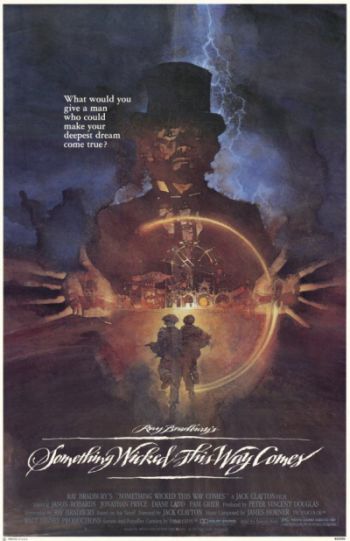


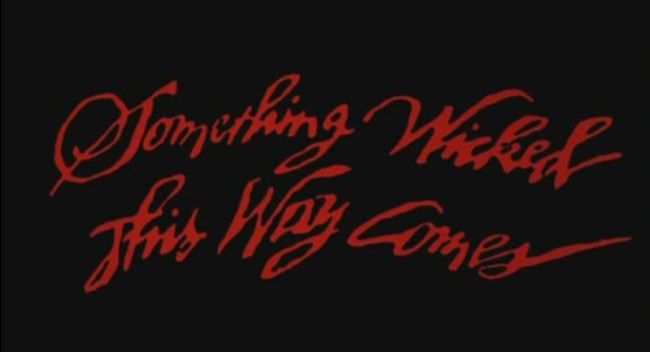
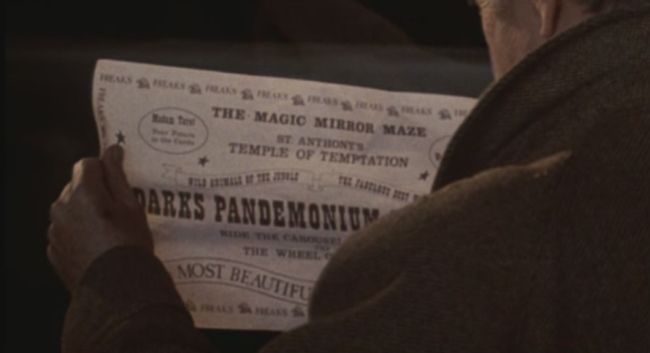
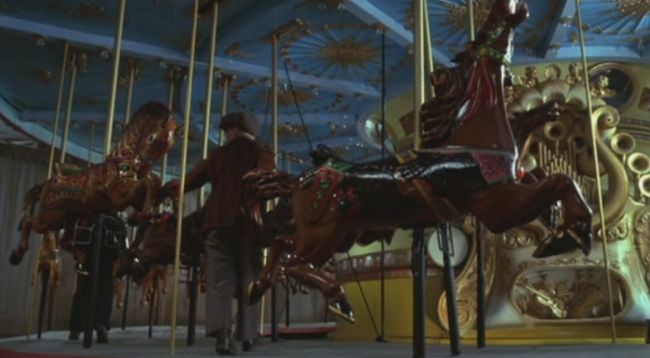
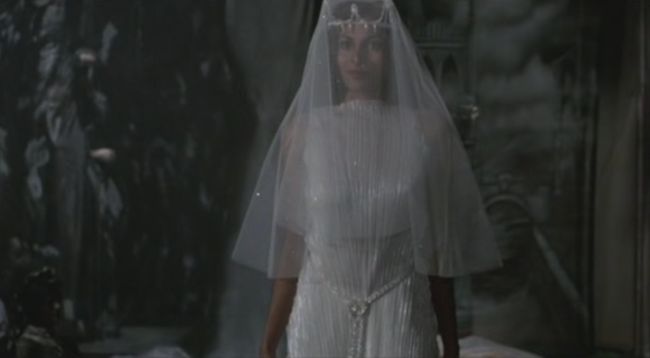
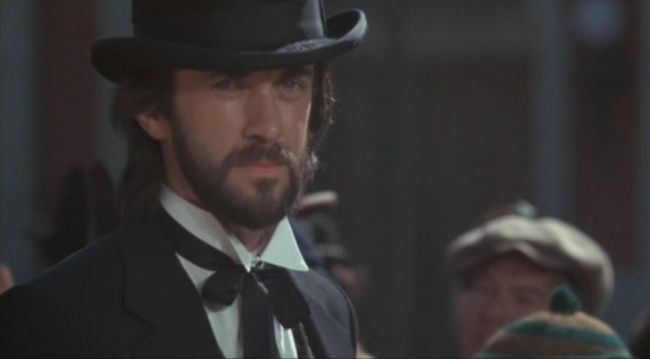
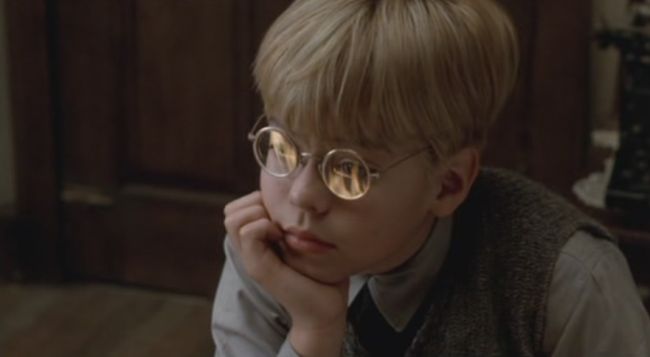
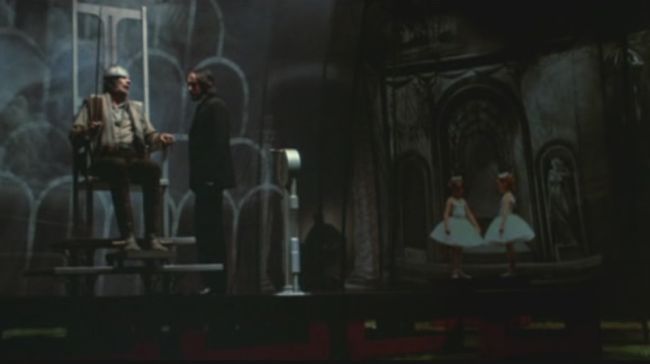
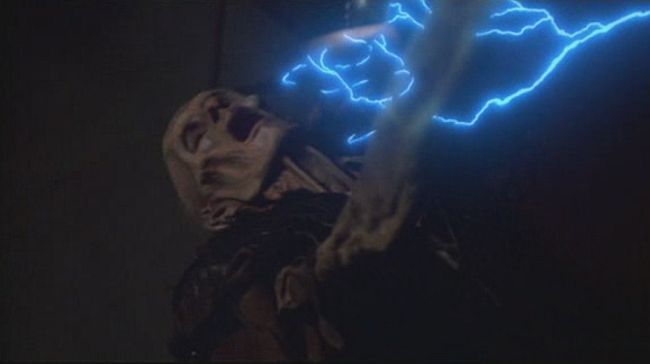
No comments:
Post a Comment